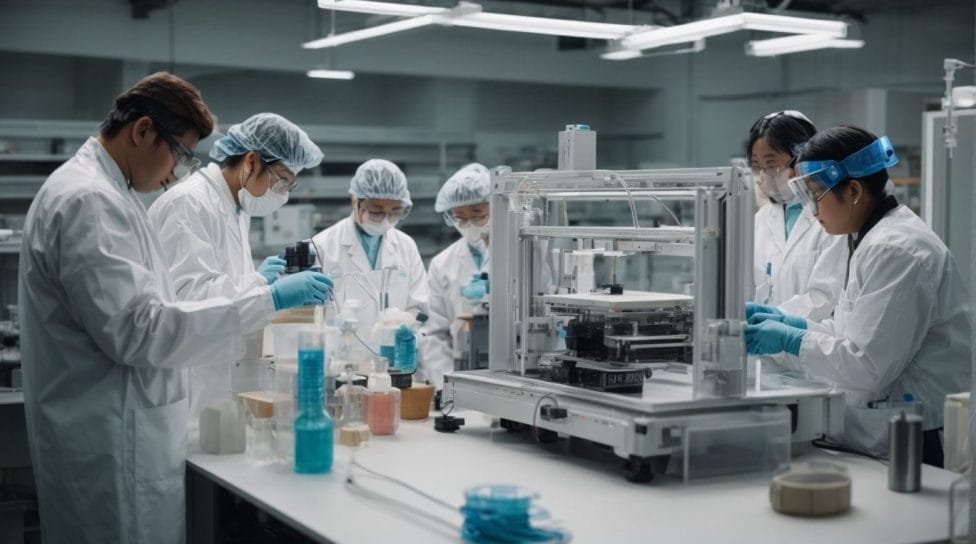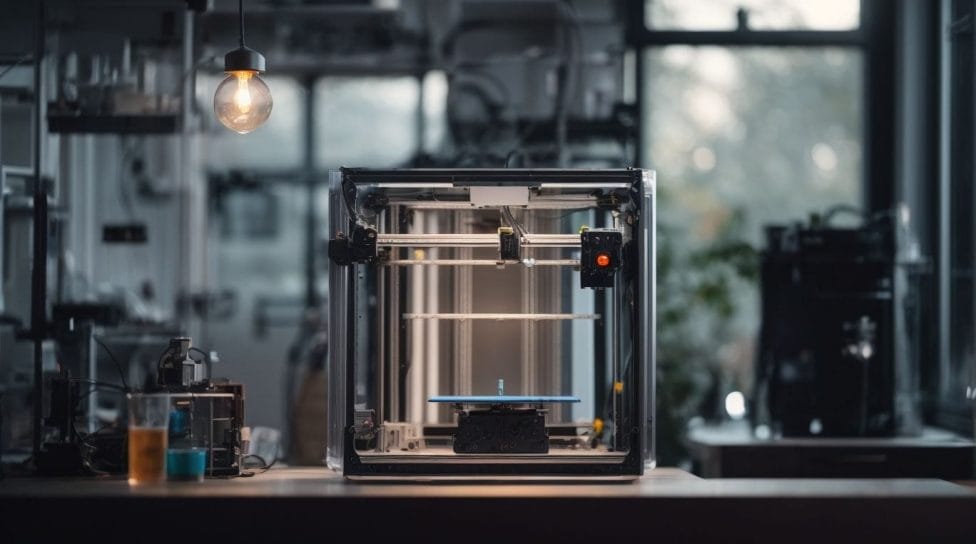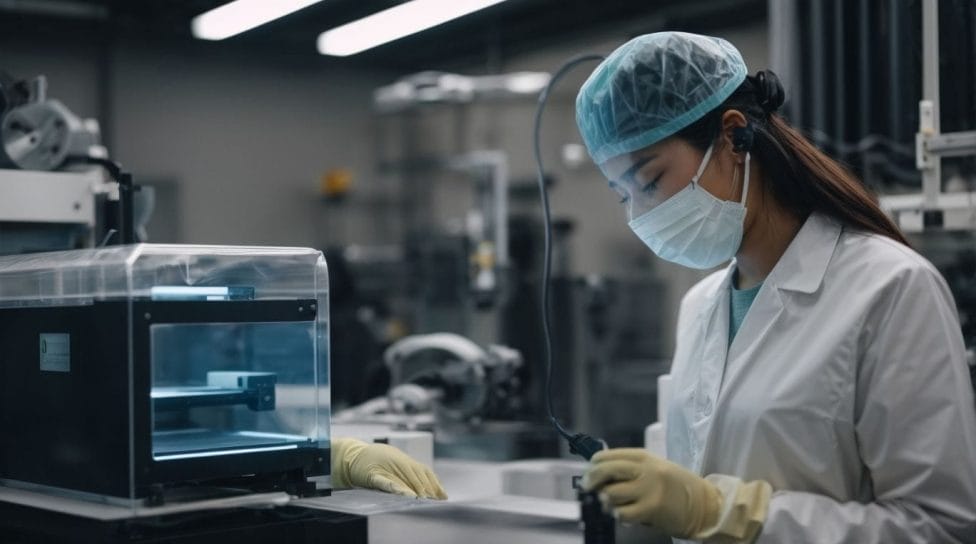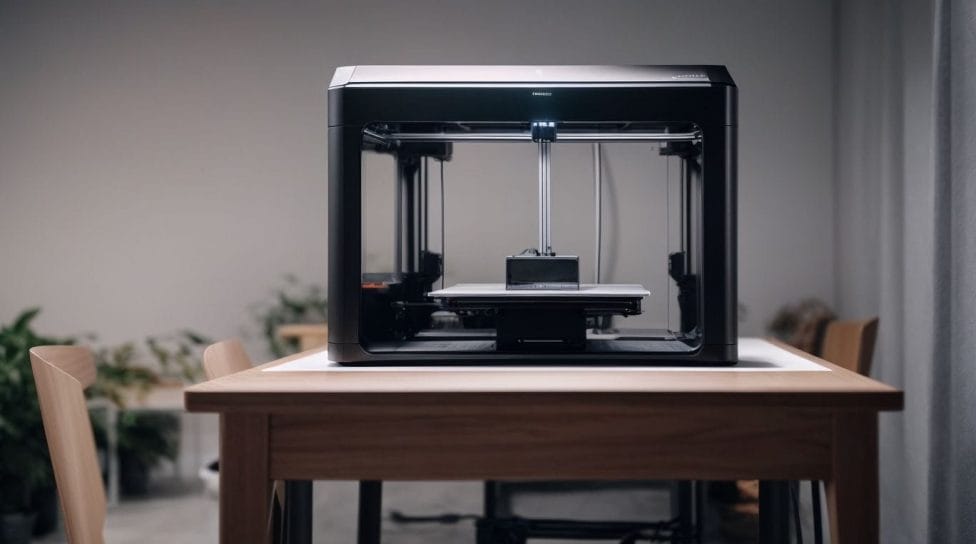The increasing popularity of 3D printers has raised concerns about their safety and potential toxicity. As with any emerging technology, it is essential to understand the safety concerns associated with 3D printers. Several factors contribute to these concerns, including the emission of volatile organic compounds (VOCs), particulate matter pollution, and exposure to harmful chemicals.
- Emission of Volatile Organic Compounds (VOCs): 3D printers emit VOCs, which are organic chemicals that can vaporize into the air at room temperature. Prolonged exposure to high levels of VOCs can have adverse health effects, including eye, nose, and throat irritation, as well as respiratory issues.
- Particulate Matter (PM) Pollution: 3D printers produce fine particles during the printing process, which can be inhaled into the lungs. These particles, known as particulate matter (PM), have the potential to cause respiratory problems and exacerbate existing conditions such as asthma.
- Exposure to Harmful Chemicals: The filaments used in 3D printing can contain potentially toxic chemicals such as styrene, acrylonitrile, and formaldehyde. Direct contact or inhalation of these chemicals can lead to various health issues, including skin irritation, headaches, and long-term health effects.
The question remains: are 3D printers toxic? While there are potential health risks associated with 3D printing, the degree of toxicity depends on various factors, including the specific printer model, filament type, printing conditions, and ventilation.
Understanding the types of filaments and their toxicity levels is crucial in assessing the potential health risks of 3D printing. Some filaments, such as ABS (Acrylonitrile Butadiene Styrene), are known to emit higher levels of toxic fumes compared to PLA (Polylactic Acid) filaments, which are considered safer.
Several safety measures can be implemented to reduce exposure and minimize health risks when using 3D printers. These include ensuring adequate ventilation in the printing area, using enclosed or filtered printers to contain emissions, and selecting materials with lower toxicity levels.
Regulations and industry standards also play a vital role in ensuring the safety of 3D printers. There are existing guidelines and regulations in place that manufacturers and users need to adhere to. The industry is actively trying to develop safer 3D printing technologies and materials.
Key takeaways:
- 3D printers emit volatile organic compounds (VOCs) that can harm human health.
- Particulate matter pollution is another safety concern associated with 3D printers.
- Selecting enclosed or filtered 3D printers and using proper materials can help reduce exposure to harmful chemicals.
What are the Safety Concerns with 3D Printers?

Photo Credits: Futureproof3D.Com by Jeremy Hill
Many people are captivated by the fascinating world of 3D printing, but it’s important to address the safety concerns of this innovative technology. In this section, we will spotlight the potential hazards associated with 3D printers. From the emission of volatile organic compounds to the risk of exposure to harmful chemicals, we’ll navigate through the different safety considerations that users should be aware of. So, let’s delve into the critical aspects of 3D printer safety and explore the measures needed to ensure a secure printing experience.
1. Emission of Volatile Organic Compounds
Emitting volatile organic compounds (VOCs) poses a significant safety concern for 3D printers. These printers release compounds like benzene and formaldehyde into the air during the printing process. Exposure to these VOCs can result in various health issues, including respiratory problems, eye irritation, and even long-term effects like cancer. To ensure a safer printing environment, it is crucial to implement safety measures that minimize VOC emissions. These measures may include ensuring adequate ventilation, using enclosed or filtered printers, and selecting materials with low VOC content. Furthermore, adhering to existing guidelines and industry efforts to improve safety standards for 3D printers is essential.
2. Particulate Matter Pollution
Particulate matter pollution is a significant safety concern associated with 3D printers. These machines emit tiny particles into the air, which can be inhaled and pose potential health risks. Numerous studies have demonstrated that these particles can penetrate the respiratory system, potentially leading to respiratory and various health problems. To mitigate exposure to particulate matter pollution, it is crucial to implement safety measures such as ensuring adequate ventilation, using enclosed or filtered printers, and selecting suitable materials. By taking these precautions, the release of particles can be minimized, creating a safer environment for 3D printing. To enhance protection against particulate matter pollution, it is recommended to consider using printers with built-in air filtration systems.
3. Exposure to Harmful Chemicals
Exposure to harmful chemicals is a significant safety concern when using 3D printers. It is crucial to have a comprehensive understanding of the potential risks associated with these chemicals and to take the necessary precautions. Here is a table that highlights some important points related to this issue:
| 1. Chemicals Used | 3D printing involves using resins, filaments, and adhesives that may contain toxic substances. |
| 2. Health Effects | Prolonged exposure to these chemicals can lead to respiratory issues, skin irritation, and even allergic reactions. |
| 3. Prevention | It is essential to ensure good ventilation in the workspace, utilize personal protective equipment, and handle chemicals carefully to minimize the risks. |
| 4. Material Selection | When choosing materials for 3D printing, it is advisable to opt for safer and less toxic alternatives like PLA instead of ABS. |
| 5. Regulations | To ensure the safer use of 3D printers, it is imperative to follow industry guidelines and regulations regarding chemicals. |
Are 3D Printers Toxic?

Photo Credits: Futureproof3D.Com by Jacob Harris
Discover the truth about the toxicity of 3D printers. Delve into the potential health risks associated with these innovative machines. Uncover the different types of filaments used and their varying levels of toxicity. Brace yourself for eye-opening facts and figures that will make you rethink the safety of 3D printing. Get ready to dive deep into the world of 3D printers and their impact on our well-being.
1. Potential Health Risks
Exposure to certain emissions and chemicals from 3D printers can potentially pose health risks. Emitting volatile organic compounds (VOCs) during printing can result in respiratory issues and irritation. Additionally, the pollution caused by particulate matter from printer emissions can lead to respiratory problems and lung damage. It is important to note that the toxicity levels can be determined by the type of filament used, as some filaments release harmful chemicals when heated. To mitigate these risks, it is crucial to ensure adequate ventilation, opt for enclosed or filtered printers, and choose materials with low toxicity.
Moreover, guidelines and regulations exist to promote safer practices in 3D printing. Balancing the benefits and risks associated with 3D printing is essential for maintaining the health and safety of individuals. Studies have shown that certain 3D printers emit ultrafine particles similar in size to nanoparticles, which have the potential to penetrate deep into the respiratory system and cause health effects.
2. Types of Filaments and Their Toxicity Levels
Different types of filaments used in 3D printers have varying levels of toxicity. It is crucial to understand these toxicity levels to ensure safe and healthy printing.
Types of Filaments and Their Toxicity Levels
| Filament Type | Toxicity Level |
|---|---|
| PLA (Polylactic Acid) | Low toxicity, biodegradable |
| ABS (Acrylonitrile Butadiene Styrene) | Moderate toxicity emits fumes |
| PETG (Polyethylene Terephthalate Glycol) | Low toxicity, may emit odors |
| Nylon | Low to moderate toxicity, emit fumes |
By choosing filaments with lower toxicity levels, such as PLA or PETG, and implementing proper ventilation systems, you can minimize exposure to harmful substances while enjoying the benefits of 3D printing.
What are the Safety Measures to Reduce Exposure?

Photo Credits: Futureproof3D.Com by Roy Rivera
Are you curious about the safety measures to reduce exposure when using 3D printers? Dive into this section to discover key steps for a safer printing experience. From ensuring adequate ventilation to utilizing enclosed or filtered printers and making proper material selections, these measures are vital for minimizing potential risks. Let’s explore how implementing these safety precautions can help reduce your exposure to toxins and create a healthier printing environment. Safety first!
1. Adequate Ventilation
To ensure the safe use of 3D printers, it is crucial to have adequate ventilation. Proper ventilation plays a significant role in reducing the levels of potentially harmful emissions and particles in the air. Here is a table that highlights the importance of adequate ventilation in 3D printing:
| Benefits of Adequate Ventilation | Risks of Inadequate Ventilation |
|---|---|
| 1. Reduces the concentration of volatile organic compounds (VOCs) emitted during printing. | 1. Increased exposure to VOCs, which can lead to respiratory irritation and other health issues. |
| 2. Minimizes the release of particulate matter into the air, preventing potential lung damage. | 2. Inhalation of high levels of particulate matter can cause respiratory problems and may worsen conditions like asthma. |
| 3. Helps dissipate the strong odor often associated with certain printing materials. | 3. Prolonged exposure to the unpleasant smell may cause discomfort and may indicate the presence of potentially harmful substances. |
Proper ventilation not only protects your health but also ensures a safer and more enjoyable 3D printing experience.
2. Enclosed or Filtered Printers
Enclosed or filtered printers offer significant safety advantages when utilizing 3D printers. These printers play a crucial role in minimizing the emission of harmful substances and safeguarding users against exposure to toxic particles and chemicals. They are specifically designed with a closed chamber or integrated filtration system, which effectively captures and eliminates volatile organic compounds (VOCs) and particulate matter pollutants. By utilizing enclosed or filtered printers, individuals can effectively mitigate the health risks associated with 3D printing. It is essential to carefully choose printers equipped with these safety features to ensure a safer printing environment.
3. Proper Material Selection
Proper material selection is crucial when using 3D printers to ensure safety and maximize the quality of printed objects. Consider the following factors:
| 1. Filament Type: | Choose filaments that meet your specific needs. PLA is eco-friendly and easy to print, while ABS is stronger but may release toxic fumes. |
| 2. Filament Quality: | Opt for high-quality filaments to reduce the chances of clogs, poor adhesion, or emissions of harmful substances. |
| 3. Filament Certifications: | Look for certifications like RoHS or REACH compliance, indicating that the filament meets specific safety standards. |
Historically, 3D printing started in the 1980s and has since evolved in various industries, including manufacturing, healthcare, and aerospace. Its growing popularity has led to advancements in materials and technologies, making 3D printing a versatile and valuable tool.
Regulations and Standards for 3D Printers

Photo Credits: Futureproof3D.Com by Bradley Williams
Regulations and standards play a crucial role in the world of 3D printers. Let’s dive into this essential aspect and explore the existing guidelines and regulations surrounding 3D printers. But that’s not all – we will also uncover the industry’s ongoing efforts to ensure safer 3D printing practices. Get ready to discover how authorities and the industry are shaping the landscape of 3D printing safety.
1. Existing Guidelines and Regulations
Existing guidelines and regulations play a crucial role in ensuring the safe use of 3D printers. These regulations aim to minimize potential health risks and control the emission of harmful substances.
| Existing Guidelines and Regulations: | Regulatory Bodies: | Focus Areas: |
| OSHA guidelines (Occupational Safety and Health Administration) | OSHA | Worker safety, exposure limits, ventilation requirements |
| UL 2904 standard | Underwriters Laboratories (UL) | Emission testing, material safety |
| REACH Regulation | European Chemicals Agency | Chemical safety, substance registration |
These existing guidelines and regulations provide valuable information and requirements for safe 3D printing practices. Individuals and organizations must familiarize themselves with these guidelines and adhere to them to protect health and well-being.
To further enhance safety, it is advisable to stay updated with any new guidelines and industry efforts towards safer 3D printing practices.
2. Industry Efforts for Safer 3D Printing
- Companies are making concerted efforts to ensure the safety of 3D printing, safeguard the well-being of users, and mitigate potential risks.
- A significant aspect of these industry initiatives involves the development of safer materials. Extensive research is being conducted by companies to produce filaments with lower toxicity levels, thus reducing exposure to harmful chemicals.
- Manufacturers also recognize the importance of improving ventilation systems to enhance safety standards. Consequently, 3D printers are now equipped with better-built enclosures and ventilation mechanisms, effectively minimizing emissions of volatile organic compounds (VOCs) and reducing particulate matter pollution.
- Industry organizations play a vital role in educating and raising awareness among users. They actively promote safe practices by disseminating guidelines on proper handling, ventilation, and material selection.
- Promoting collaboration between the industry and regulatory bodies is another crucial aspect of ensuring safer 3D printing practices. Close cooperation allows for establishing and complying with safety regulations and standards set by government agencies for 3D printers and materials.
Some Facts About “Are 3D Printers Toxic?”:
- ✅ 3D printers emit fumes that contain ultrafine particles (UFPs) and volatile organic compounds (VOCs). (Source: MakeUseOf)
- ✅ Inhaling 3D printer fumes can cause respiratory problems, eye irritation, and skin issues. (Source: MakeUseOf)
- ✅ Some materials used in 3D printing, such as ABS and resin, emit harmful substances like styrene gas and carcinogens. (Source: IPSystemsUSA)
- ✅ Proper ventilation and air circulation, along with the use of a respirator mask, can help protect against 3D printer fumes. (Source: MakeUseOf)
- ✅ Long-term exposure to 3D printer fumes can potentially lead to respiratory distress symptoms and even cancer. (Source: MakeUseOf)


